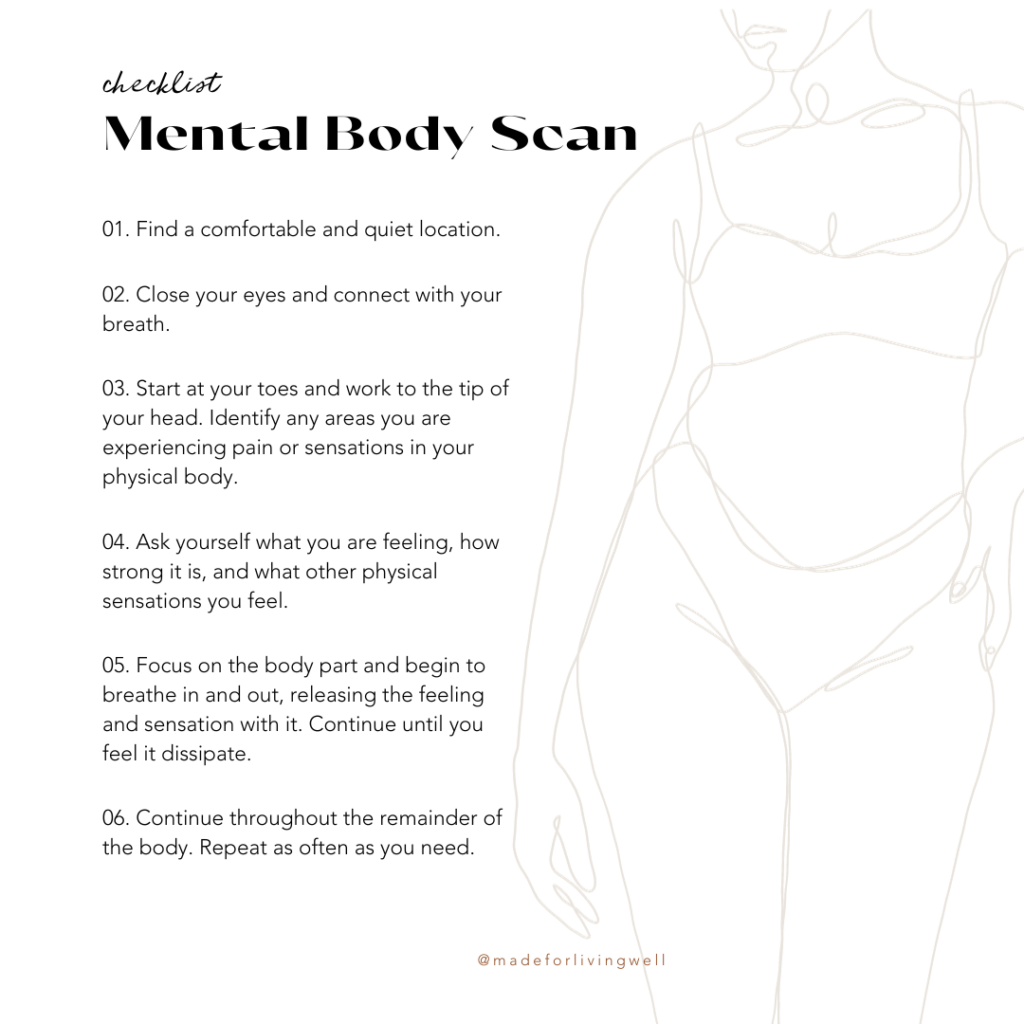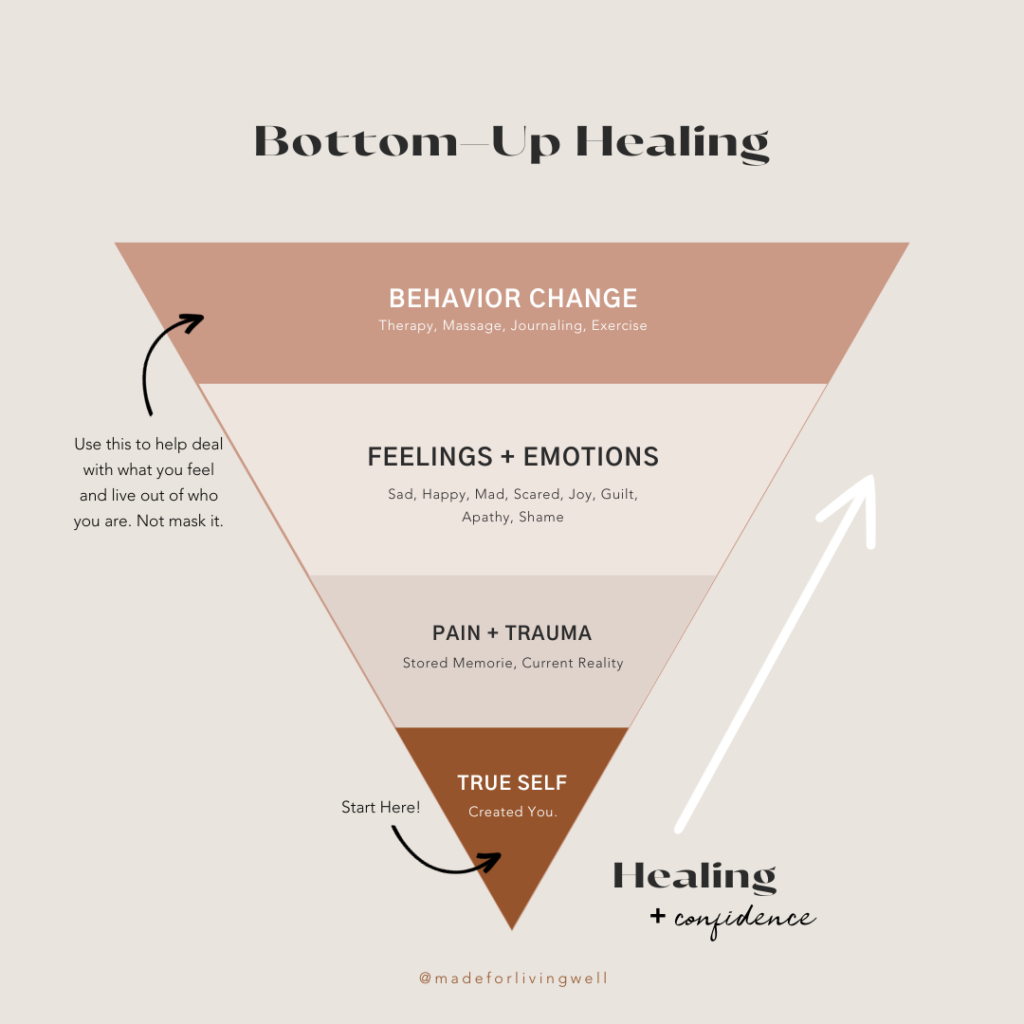
My therapy journey began because I wanted to stop feeling. Most therapy begins because you want to change how you feel. At least feeling the things you didn’t want to feel. Just like I wanted emotional control in the form of only feeling what I wanted to feel and never feeling what I didn’t.
Arguably, we’d all love that superpower. To feel the good without ever experiencing the bad. But it doesn’t exist, and for good reason.
All feelings are valid. They have a purpose, even the painful ones. But most people have gotten good at avoiding or numbing feelings as a way to deal with them.
But it never deals with them. It just masks them.
Feelings are part of being human. You were created to feel, which means you should feel. The journey to healing is not by suppressing the feeling but by learning how to feel without being controlled by the feeling.
Change how you feel by understanding what you feel.
When I went to therapy, I didn’t know how much control I had over how I felt or at least the ability to change it. I spent so much time trying to run from feelings and create a life where I wouldn’t have to feel the things I didn’t want to that I missed the beauty of healing emotions and using those feelings to create a better life.
I realized the superpower we’re looking for is not diminishing our feelings but creating better ones. It’s being able to feel everything while using what you feel to shift your actions because you know how to heal them.
Emotional regulation is the superpower. That happens through healing your nervous system.
I brought Mandy L. Harvey on the podcast to talk about emotional regulation, healing from trauma, and how to feel without getting hurt by what you feel but using it to thrive.
What are you feeling?
Feelings are complicated.
Anything complicated can feel overwhelming to the point we tend to avoid it. I think that’s why we use confusion as an excuse or a justification for why we can’t change. Not because change is impossible but because the way to change feels overwhelming and scary.
That leaves you looking for the next best solution. To mask or numb. Anything to attempt to stop feeling as fast as humanly possible.
I’m not a stranger to hard feelings. I call myself a recovering pain addict because pain become a safe place for me. I knew how to get through pain or mask it. That didn’t always happen in healthy ways.
I was a master of shoving painful feelings and experiences under the rug. On the surface, everything looked great. But under the rug, I was fighting an internal battle with the trash I never took out.
I think many people live here. And getting stuck here is easy because it’s a form of survival. We shove and hoard and store what we don’t have the energy or ability to deal with.
In the short term, this can help you survive. But long-term, it’s harming every cell of your being.
If you want to change how you feel, you must deal with your feelings. That means knowing your feelings.
The body scan approach to heal

When I started healing, I thought I knew what I was feeling. I had surface-level terminology that seemed to fit the box, making it easy and quick to say I felt bad, heavy, or sad.
But beyond that, I couldn’t pinpoint what else I felt. Let alone where I felt it or why.
I didn’t understand that feelings always have roots. I didn’t understand healing what I felt required uprooting what was damaging to replace it with what is healing. Using the art of mental body scans helped me get to the root.
I was sitting on my therapist’s floral coach the day she taught me the art of body scans. She had me close my eyes and think about what I was feeling. But she didn’t stop there. She encouraged me to go deeper, asking me what color that feeling brought and where I felt it in my body.
It sounds silly, even awkward until you experience it.
My anger was black and had settled as a tightness in my thighs. Most of my emotions landed there. They clung to my thighs like a rope being pulled around a pole. Tighter and tighter, I felt the pressure the more I focused on the emotion.
My body was responding. Just like it always is to every emotion you and I are feeling because emotions create physical reactions 100% of the time.
Healing the emotion required understanding it.
That’s the power of body scans. It helps you go deeper. To get to the root of what you’re feeling. And understand why you might be feeling that way and why your body is responding this way.
In the process of understanding, you can do something. Not just surface-level ideas (or what are considered top-down approaches to healing) that leave you masking what you’re feeling by calling it healing.

These top-down approaches aren’t wrong. They can be helpful, but only after you understand what is at the bottom. Getting to the root of what you feel, where you feel it, and why you might feel it (bottom-up approach).
Healing from the bottom up requires you to do a body scan.
Try it out for yourself to change how you feel.
Every emotion gets expressed in three plans. First is the body (physical), second is feelings, and third is behavior. Take the emotional reaction of fear, for example. It occurs automatically and unconsciously, triggering physical changes like mouth dryness, muscle contractions, and heart racing.
But you feel it only after the physical changes have occurred. You feel it in your body before you feel it in your mind. Practicing mental body scans can help you recognize emotion quickly. This boosts emotional awareness and control, improving your emotional intelligence.
01. Get Still
Find a comfortable and quiet place to pay attention. Over time and through practice, you should be able to do this anywhere. But to get started, you need space to tune in.
02. Connect with your body
Close your eyes and take a few deep breaths. Start to connect with your body through your breath. Feel the air through your nose and move into your lungs, expanding your belly. Let it release. Repeat until you are fully aware of your physical body.
Then, begin to notice other areas of your body. What do you feel? If it’s not a problem, you won’t notice it. Your mind will locate what feels differently, and that is the point where you can start to focus.
03. Identify the emotion
What is your body feeling? What emotion might be associated with that?
04. Release it
When you can name the emotion, understand why you might be feeling that way, take a breath, and release it.
05. Repeat
Continue this practice for each area you feel in your body, moving from your feet to the top of your head. Remember to keep breathing and releasing.
Remember, you don’t have to store everything you feel. You shouldn’t. Release it to make room for something else.
Use this practice anytime you feel overwhelmed or stressed. In good or bad, it’s important to pay attention to your body. To go deeper to the root and release what isn’t helpful.
Your body wants to be heard.
It can seem silly and even awkward. Trust me, the first time I did this in therapy, I thought my therapist had lost it. But when I did the work, I saw the power of it. I felt it. I was lighter and free.
It’s easy to get caught up in believing you have emotional control because you’ve gotten good at covering your emotions. But what you don’t feel you can’t heal.
True healing comes from dealing with your emotions because they are always, 100% of the time, igniting a physical reaction.
If you want to change how your body responds, you must learn how to change what you feel.
That requires paying attention. You have to listen to your body.
Take time to go through the body scan. Maybe even circle on a graphic where you are feeling it physically and then put emotion to it. Then, practice acknowledging that feeling while releasing it.
That doesn’t mean justifying it, excusing it, or shoving it. But acknowledge and release. Live aware and let go.
That’s the secret to change how you feel.
The more you let go of what you don’t want to feel, the more you make room to feel what you do. You create what you want to feel. That is emotional regulation.
Try it out for yourself. Get to the root. Healing happens from the bottom up.
Want to learn more?
Ready to take a deeper dive? Check out these resources and posts to help you create more emotional mastery!
Don’t forget to Join The Weekly Fill as we dive deeper into the topic of emotional mastery, inner child healing, and practical tips on how to heal. Join The Weekly Fill Here!
- Learn more about Mandy and follow her work here.
- How You Heal: Emotional Mastery
- Emotional Energy: Change How You Feel To Change How You Look
- How Do You Find Happiness? Stop Trying
- The Simple Mindset Shift Changed My Health
Would you help me out?
I would love for you to share this with your friends and family! Take a moment to copy and paste this link on social media or send it in an e-mail to a few friends! And if you have another minute, would you leave a rating and review on the podcast? It would mean the world to me.
